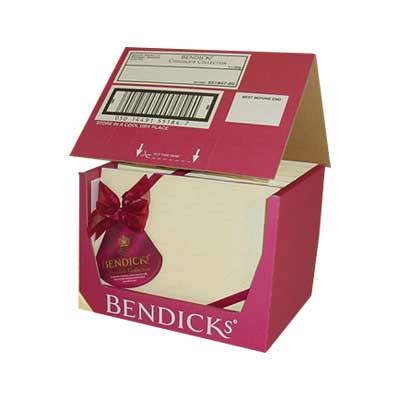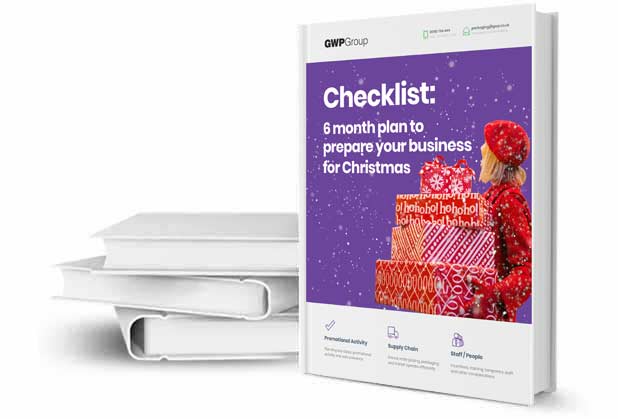Planning and designing seasonal packs
What you should – and definitely shouldn't – do when creating seasonal packaging
If you want to create an impact in retail stores, drive sales, and win customers this Christmas, your seasonal packaging can play a crucial role.
Even with uncertainty regarding the UK economy, the cost-of-living crisis, stock shortages, and other issues, almost half of UK shoppers expect to increase their spending over Christmas.
To capitalise, many businesses will look to limited-time promotions, marketing campaigns, and seasonal packaging to capture a share of these additional sales.
But what should you consider if you plan to use your packaging as a promotional tool? This guide covers the seven dos and don’ts when creating seasonal packaging, covering:
- Maintaining your brand recognition.
- Consideration of target customers, demographics, and competitors.
- How specific you should make your seasonal packaging designs.
- And much more!
Contents
Introduction
Seasonal activity and the UK economy
Whilst there is ongoing pessimism amongst UK consumers regarding the UK economy, nearly half of UK households (47%) do not expect cost-of-living pressures to affect their Christmas spending this year. This represents an increase from the 43% in 2023.
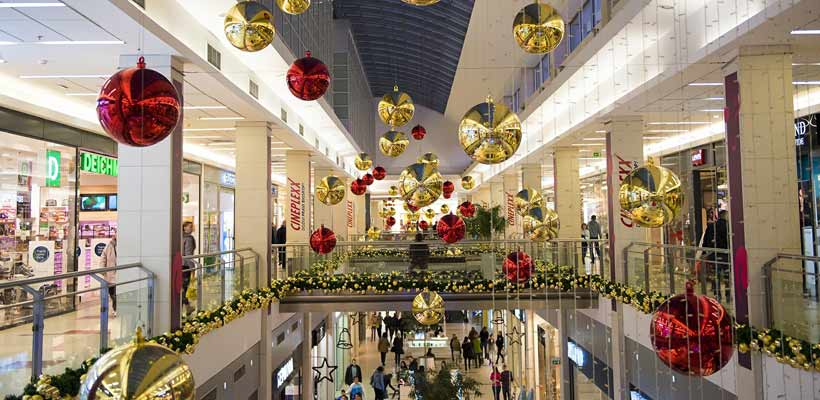
As a result, UK shoppers plan to spend an average of £362 on gifts, a 10% increase from last year. The same consumers will typically spend a further £317 on festive food and drink, up nearly 60% (although these figures do not account for the effect of inflation on higher costs).
However, 32% of shoppers are reportedly expected to spend less this Christmas, buying fewer presents and seeking cheaper food alternatives.
However you interpret these figures, one thing is clear: your seasonal packaging becomes even more crucial during the key festive sales period.
What is seasonal packaging?
Seasonal packaging is used for a specific event, time period, or promotion. Popular at Christmas, seasonal product packaging aims to drive sales amongst consumers who would not usually (or infrequently) buy a specific product.
Limited-edition packaging can feature different prints, designs, colours, sizes, or even materials. With sales competition as fierce as ever in 2025, leveraging your packaging as a promotional tool is crucial.

Why consider seasonal packaging?
Seasonal products, promotions, and packaging remain crucial considerations (as highlighted by these Christmas packaging facts and statistics).
But why use seasonal packaging?
Done correctly, seasonal packaging can significantly increase your sales volumes, brand awareness, and impulse purchases. It can also help you stand out from the competition, attract additional shelf space, and, in the longer term, drive consumer loyalty and repeat sales.
Ultimately, it can be the difference between a red-hot sales period and a lukewarm (or worse) festive season.
But critically, your packaging must be on point to achieve this. As such, this guide covers the seven things you should and shouldn’t do when creating seasonal packaging.
The seven do’s for creating your seasonal packaging
The key points to consider to drive seasonal sales volume
The seven most important considerations, and targets you should be aiming to hit, when creating seasonal packaging are:
- Enhancing product appeal to encourage consumers to make a purchase.
- Upselling your products.
- Adding value to your packs.
- Building brand loyalty.
- Adding personalisation to your seasonal packaging design.
- Aligning with existing branding.
- Having a promotional strategy.
Increase product appeal and persuade consumers to buy
Of course, the key objective of your seasonal packaging should be to increase the appeal of your products in a retail environment.
Taking Christmas as the obvious example, many shoppers look for festive-themed packaging suitable for gifting. This appeal is particularly important for products that would otherwise not be associated with the season.
Festive or seasonal packs are also more likely to align with consumers’ moods and lead to increased impulse purchasing.
Another aspect to consider is adding a sense of luxury or drama; this can be achieved through special finishes on your packs (such as foil embossing or spot varnishing) or through clever structural design that makes your packs stand out from alternative options. Even well-designed print can make a significant difference here.
Ultimately, you should decide what your goals are for your seasonal packaging —such as brand awareness, overall sales volume, average order value, etc. —and design it to help meet those goals.
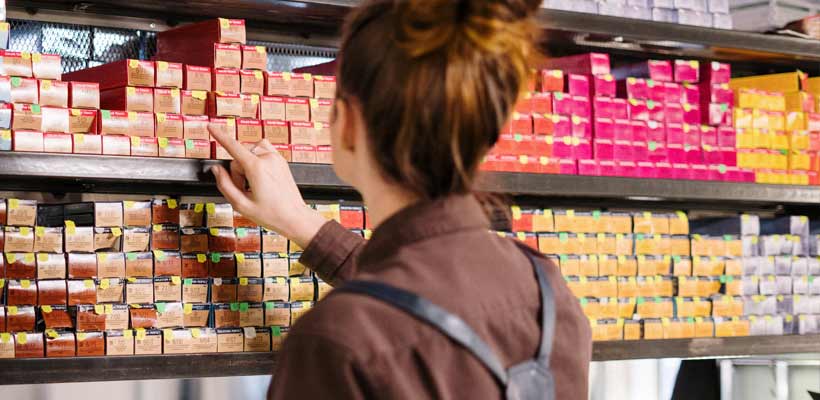
Upsell your products
Achieving this can be as simple as ensuring consistent seasonal branding across all of your existing product lines. However, businesses can also achieve this by creating multipacks or gift packs, which bundle products in a larger outer box.
Packaging (and offers) of this type can encourage customers to purchase your products as gifts for friends and family members and to buy more of them.
Other options include money off or BOGOF (buy one get one free) on all seasonally branded items. However, you should use this tactic sparingly, as it will drive volume rather than margin and can alter your brand positioning and perception.
Add value to your packs
A criticism of most seasonal packaging is that it effectively increases the amount of material used, harming the environment and placing the burden of disposal on the end recipient.
However, a way to avoid these negative associations, whilst also boosting perceived value in-store, is to design your packaging to add value to your products.
An example of adding value to your packs is using a gift box or case that the recipient can keep for ongoing storage of the items (or for another purpose). This strategy is a real win-win for brands.
Firstly, consumers see the product as more desirable and valuable, leading to higher sales at a higher cost. Secondly, it also allows your branding to remain in the consumer’s consciousness as they retain the pack over a prolonged period.
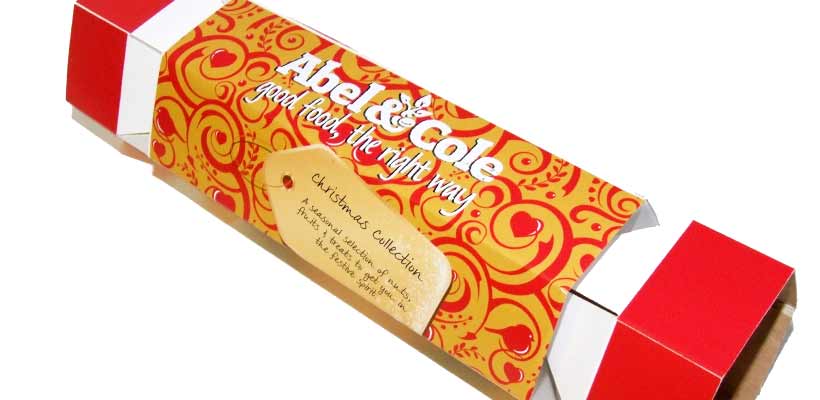
Build brand loyalty
You should aim to design your Christmas packaging to drive brand loyalty amongst your existing customer base and foster it with new customers.
Your packaging can do so by using colours, graphic designs, messaging, and effectively arousing positive emotions. These could include a sense of inclusivity, luxury, environmental care, or even evoking positive childhood memories.
Limited-edition packaging can also drive sales among your existing customers, especially when paired with suitable promotional activity. A limited run creates a sense of scarcity, a powerful way to increase sales of more expensive items.
Add personalisation to your design
Personalisation can be challenging to implement at scale, but it is a tactic you should consider for your packaging.
For example, offering personalised notes with eCommerce orders can make that gift extra special.
Digital printing can also enable personalised packs and products, which increase the item’s perceived value and show a level of thought and consideration (which reflects well on both the gift giver and your brand).
Aligning with your existing branding
Loyal customers look to your products when purchasing gifts for their loved ones (or even themselves), and they are already aware of the benefits and qualities your products offer.
However, suppose your limited-edition packaging is almost unrecognisable from your existing branding. In that case, it can turn off your loyal customer base —or, even worse, cause them to miss your products altogether.
This problem also allows competitors to showcase their products, potentially gaining customers you may never win back.
As such, you must strike a balance. Your festive packaging must look different enough to appear special. Yet it must remain close enough to your branding to reassure existing customers and maintain the brand loyalty and recognition you’ve earned. A cohesive, limited-edition packaging strategy is vital.

Have a promotional strategy
Whilst seasonal packaging is a great marketing tool in its own right, even with the perfect packs, it is still crucial to have an overall promotional plan in place.
Your broader strategy can include sending email newsletters to subscribers, giving them a “sneak peek” or early access to your seasonal or limited-edition packs. You should also consider general advertising, influencer mentions (including popular unboxing channels on YouTube), and securing prominent positions in retail outlets.
You should also consider coordinated point-of-sale (such as CTUs or FSDUs), which allow you to place your promotional packs at the locations most likely to grab consumer attention and drive impulse purchases.
The seven don’ts when planning and designing seasonal packaging
The seven errors you must avoid when creating your promotional packaging
Whilst you could nail all of the points detailed in this guide and sit back, safe in the belief that your seasonal packaging will soon increase your sales, avoiding these seven pitfalls is equally imperative. Each of these could seriously dent your performance.
When considering your seasonal packaging, you must avoid the following:
- Overestimating stock.
- Overspending on your packaging or design.
- Focusing on holidays which are too specific.
- Focusing on the wrong holidays or demographics.
- Mimicking your competitors.
- Losing your brand differentiators.
- Making basic mistakes in your artwork.
Don’t overestimate your stock
Whilst it’s easy to do, especially given the difficulties of forecasting in the current economic climate, it is important not to overestimate the stock levels of the seasonal packaging that you require.
Firstly, whilst flooding the market can be a good tactic in specific scenarios, being too visible can erode any exclusivity that seasonal packs typically convey (this is more critical with luxury and higher-value products).
Secondly, it could also mean significantly discounting products towards the end of the seasonal period to avoid leftover or unsellable festive lines. As a pricing strategy (whether planned or not), it could impact your brand positioning. For example, a luxury or upmarket brand discounting large volumes of products or packs can quickly harm your brand equity.
Finally, you may also be left with a large amount of packaging to write off (and the financial implications of doing so).

Don’t overspend on your packaging or design
It can be pretty easy to get carried away with your festive or seasonal packaging, with new prints, specialist finishes, unique structural designs, a mix of materials, larger dimensions, etc.
But this can quickly lead to costs ballooning. If the market you operate in is particularly price-sensitive (something affecting many more sectors this year), these limited-edition packs could quickly erode your margin.
You should also consider that larger packs, while grabbing more attention in-store, are more costly to ship. If you prioritise form over function, you may also see a higher incidence of items being damaged in transit.
In essence, the more you spend on your seasonal packaging, the bigger the risks you take (especially considering the potential for over-ordering, as detailed above). You must find the right balance.
Don’t focus on holidays that are too specific
Depending on your budget, expected sales and aims for your seasonal packaging, it can be easy to fall into the trap of being too specific with what you are targeting.
For example, whilst you may wish to produce a specific Christmas pack, this means the design will be out of date after December 25.
However, if you produce a winter pack, this could stay on the shelves (without massive discounts) beyond the end of this period, and into the following year. Another good example is “Autumn” vs “Halloween” themed packs.
A further consideration, particularly for smaller retailers, is to avoid shortening the lifespan of your seasonal packaging by including special offers or promos with expiry dates. If you have excess stock, you can’t use a pack featuring “Happy Christmas 2024” the following year.
Considering the design, wording, and specific promotional offers can help keep costs down and profit margins up.
Don’t focus on the wrong holidays or demographics
Similarly, poor targeting of consumers, or how specific markets behave during certain sales periods, can also be disastrous.
As a very crude example, a florist would likely have success with a “Mother’s Day”- themed pack or gift box, but considerably less with a “Father’s Day”- themed one.
As such, it is essential to know your target consumers. You can usually determine this by reviewing historical data or, if that fails, by creating buyer personas. You can then ensure your packaging reaches shoppers actively looking for your products at that moment.
Don’t mimic your competitors
While conducting thorough competitor research and analysis is vital, a common mistake many businesses make is copying their competition.
Mimicking your competitors means your promotional packs will get lost amongst all the extra noise during busy sales periods. It can also erode the brand values you have built over the years (which is why your loyal customers choose your products).
There is also no guarantee that what your competition is doing (or has done) is or was successful. You may be copying the same mistakes they have learnt from and want to avoid.
The bottom line? Stay true to your brand aesthetics and values.

Don’t lose your brand differentiators
As with diluting your brand by copying your competition, it is also crucial that your seasonal packaging does not confuse or turn off your customers.
Specific examples include Coca-Cola releasing special-edition white cans instead of the traditional red, sparking consumer backlash after many believed they were buying the diet version of the drink (and not, inadvertently, the full-fat version).
Changing your packaging to a specific colour can also provoke unexpected reactions among consumers due to the colour psychology around certain shades.
By all means, use seasonal colours to reflect the mood of the holiday you are targeting, but carefully consider how this is likely to be perceived.
Don’t make basic mistakes with your artwork
Finally, while creating festive or seasonal artwork and designs for your packaging can be a great project, you must ensure that common mistakes are identified and corrected before final production.
At the lower end of the scale, typos, poor colour choices, or low-quality graphics can look unprofessional and harm sales. At worst, poorly worded terms and conditions or offers can result in you losing money or facing angry customers (particularly if they have bought your products based on promises your packaging makes but that you can’t keep).
Ensure you ask several colleagues not working directly on the project to proofread all artwork, wording, and other elements. It is incredible what a fresh pair of eyes can spot. Take heed of these 10 packaging artwork mistakes, too.
Summary
Making sure your seasonal packaging hits the spot
It can be critical to your business’s success that you hit sales targets during crucial trading periods, such as Black Friday, Christmas, Easter, and others (exact dates depend on your industry).
Seasonal packaging is undoubtedly an excellent tool for helping you stand out, drive sales, retain customers, and foster loyalty. However, getting it wrong can result in excess packaging (and products) that become obsolete or negatively affect your overall performance.
The steps above can be a good starting point for creating your seasonal packaging. Still, if in any doubt, it pays to speak with a packaging designer who can help you maximise the success of your promotional packs (someone like GWP, in fact).
Share this article
Further reading


About the author
David joined GWP Packaging in 1995. His extensive knowledge and experience of corrugated packaging means he is widely regarded as an expert on this topic.
Products in this guide
Get in touch
Related guides
Festive packaging and business preparation for Christmas
Retail gift set packaging – should you consider using foam?
Temporary picking bins – 12 ways to help you meet seasonal demand
Black Friday packaging – how to cope with demand
Christmas packaging facts: the definitive list
5 simple tips to cope with packaging price rises
10 packaging artwork mistakes (and how to avoid them)
18 bitesize tips for packing postal orders and eCommerce fulfilment
21 tips to prepare your warehouse for peak season
11 ideas for successful packaging during peak season demand
7 facts on the importance of eCommerce packaging
Peak packaging Monday – what is it, and does it affect your business?



























